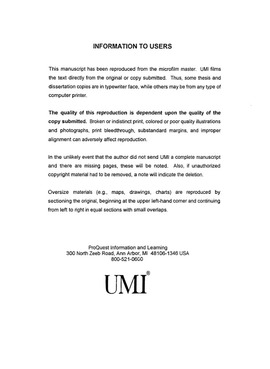| dc.contributor.advisor | Kramer, Eric, | en_US |
| dc.contributor.author | Worth, David Steven. | en_US |
| dc.date.accessioned | 2013-08-16T12:18:53Z | |
| dc.date.available | 2013-08-16T12:18:53Z | |
| dc.date.issued | 2003 | en_US |
| dc.identifier.uri | https://hdl.handle.net/11244/568 | |
| dc.description.abstract | This study of the contemporary American built environment works applies several concepts in a semiotic study aimed at understanding the values presented in the built environment. In particular Kramer's theory of dissociation, Gebser's theory of mental-rationality, Merleau-Ponty's concept of alterity, and Levinas' concept of totality are used in order to read the built environment as expressing modernity. Observations were made and visual data collected in several major American cities and interpreted according to communicative expression. Spaces explored included settings consistent with Giedion's concept of anonymous history. That is, mundane spaces of freeways, residential areas, and other everyday spaces were observed. The built environment was found to express many of the characteristics elaborated by the above authors. Emphasis on vision, supervision, flow, and sectorization were especially prevalent. | en_US |
| dc.format.extent | vi, 215 leaves : | en_US |
| dc.subject | Communication Social aspects. | en_US |
| dc.subject | Communication and technology. | en_US |
| dc.subject | Speech Communication. | en_US |
| dc.subject | Geography. | en_US |
| dc.title | The built environment as communication: Totality, alterity, and dissociation in urban and suburban spaces. | en_US |
| dc.type | Thesis | en_US |
| dc.thesis.degree | Ph.D. | en_US |
| dc.thesis.degreeDiscipline | Department of Communication | en_US |
| dc.note | Major Professor: Eric Kramer. | en_US |
| dc.note | Source: Dissertation Abstracts International, Volume: 64-03, Section: A, page: 0724. | en_US |
| ou.identifier | (UMI)AAI3082925 | en_US |
| ou.group | College of Arts and Sciences::Department of Communication | |
